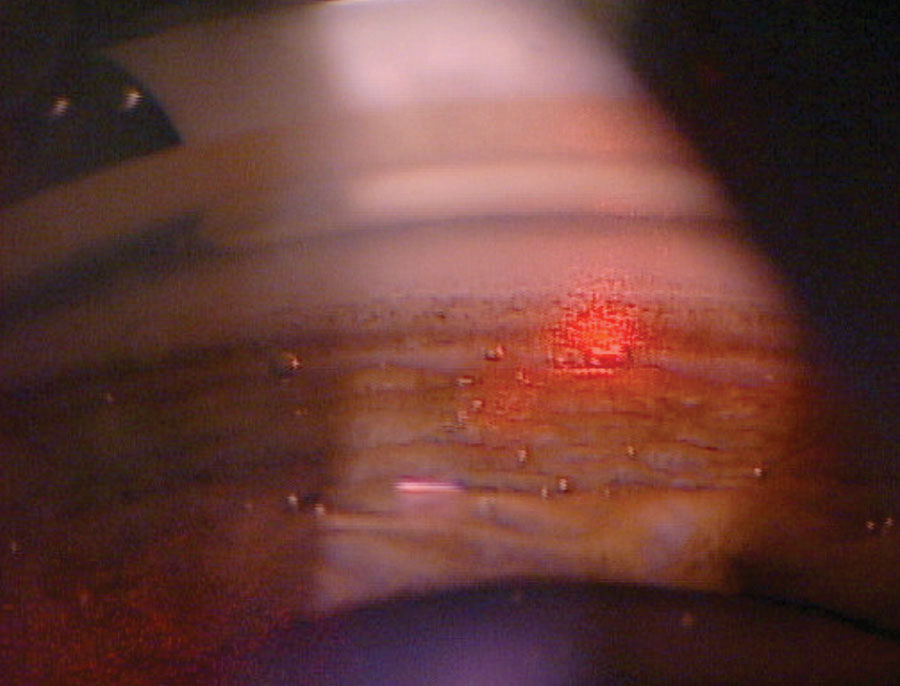 |
|
If LB 216 is passed, Nebraska will become the 11th state to allow optometrists to perform SLT. Photo: Nathan Lighthizer, OD. Click image to enlarge. |
Editor’s Note: As part of our “Year in Review” retrospective, we’ve selected the top 30 news stories of the year and are re-sharing them as we close out 2023. Follow along as we count down to number 1!
This story was originally published January 30, 2023.
No. 18 biggest news story of 2023:
Though the year is young, states have already set efforts in motion to push scope expansion legislation for optometrists. Advocates in one trailblazing state, Nebraska, are actively working to pass a bill (LB 216) this year that would allow the state’s ODs to perform selective laser trabeculoplasty (SLT), a non-invasive intraocular pressure (IOP)-lowering procedure that’s increasingly being recognized as a first-line treatment for glaucoma. The bill was introduced on January 10th and since has been voted on by the state’s Board of Health and heard by Nebraska Legislature’s Health and Human Services Committee, where it’s now awaiting committee member votes.
When the legislation was initially presented to the Nebraska Board of Health in October and again in November 2022, both votes resulted in a tie. Janet Seelhoff, executive director of the Nebraska Optometric Association (NOA), explains, “Indication from the Nebraska Department of Health and Human Services legal counsel was that the Board of Health was required to submit a report to the interim chief medical officer that could not include a vote resulting in a tie.” Thankfully, the third time’s a charm. This month, the Board voted 7-6 in favor of the bill with no abstentions, and the proposal is now being sent to the state’s acting chief medical officer, Matthew Donahue, MD, for his review.
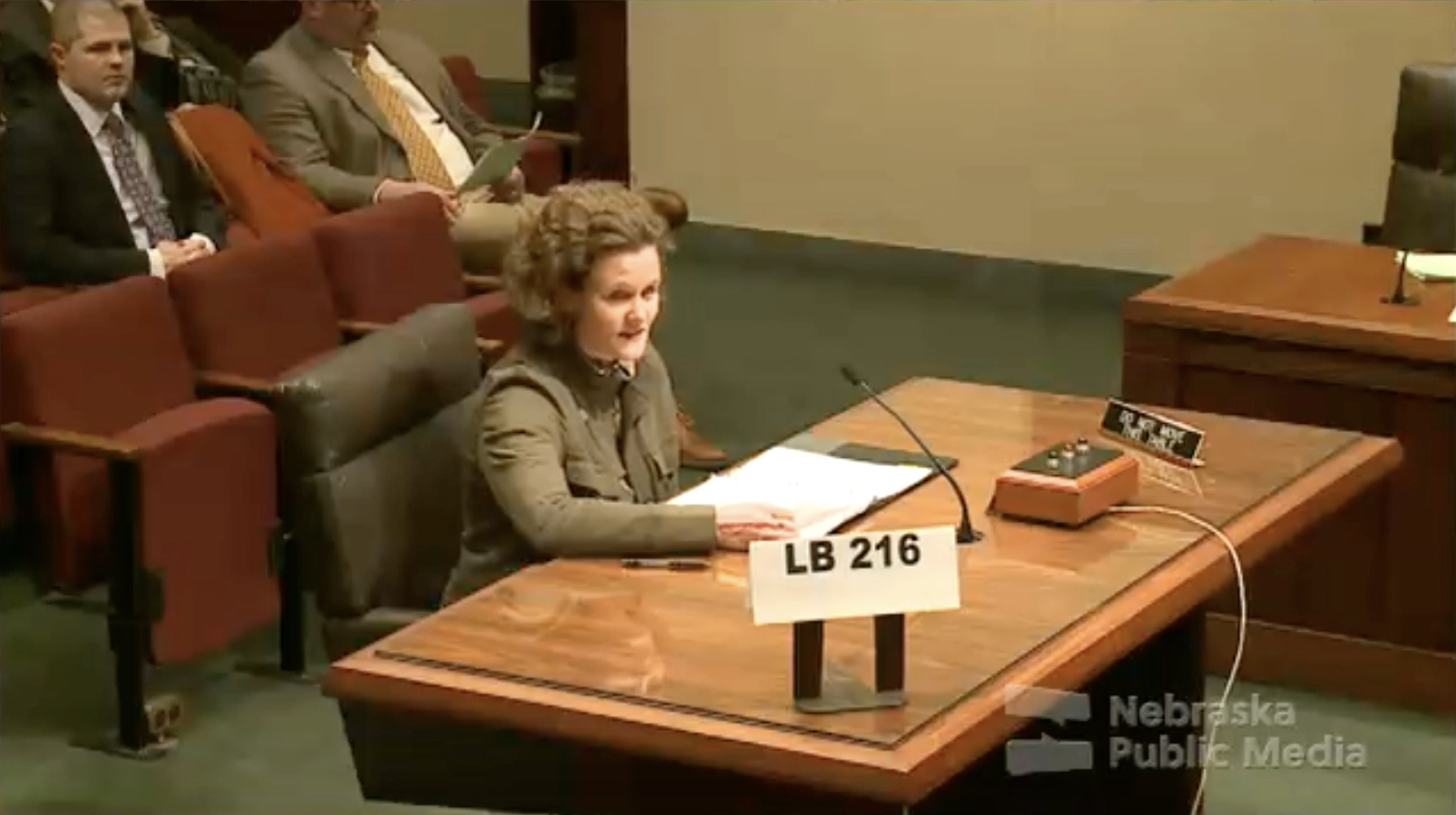 |
| Senator Jana Hughes is sponsoring LB 216, in addition to several of her colleagues. |
During the latest bill hearing on January 26th before the Health and Human Services Committee, multiple testimonies were given by doctors, advocacy leaders and community members both in support and in opposition of LB 216.
First to the stand was bill sponsor Senator Jana Hughes, who explained to committee members the legislation’s purpose to improve access to eyecare for Nebraskans. “The number of people in the US suffering from glaucoma is expected to reach 6.3 million by 2050,” she pointed out. “This bill is relevant for a significant number of people in our state who need medical help in managing this disease over the course of their lifetime. Treatment for glaucoma often depends on an ongoing regimen of eye drops that are prescribed either by an optometrist or an ophthalmologist. For many patients, SLT is a better and more cost-effective option.” Yet, Senator Hughes noted that although SLT is an in-office procedure, “there are only seven cities in our entire state beyond the Omaha metro area where patients can get SLT.”
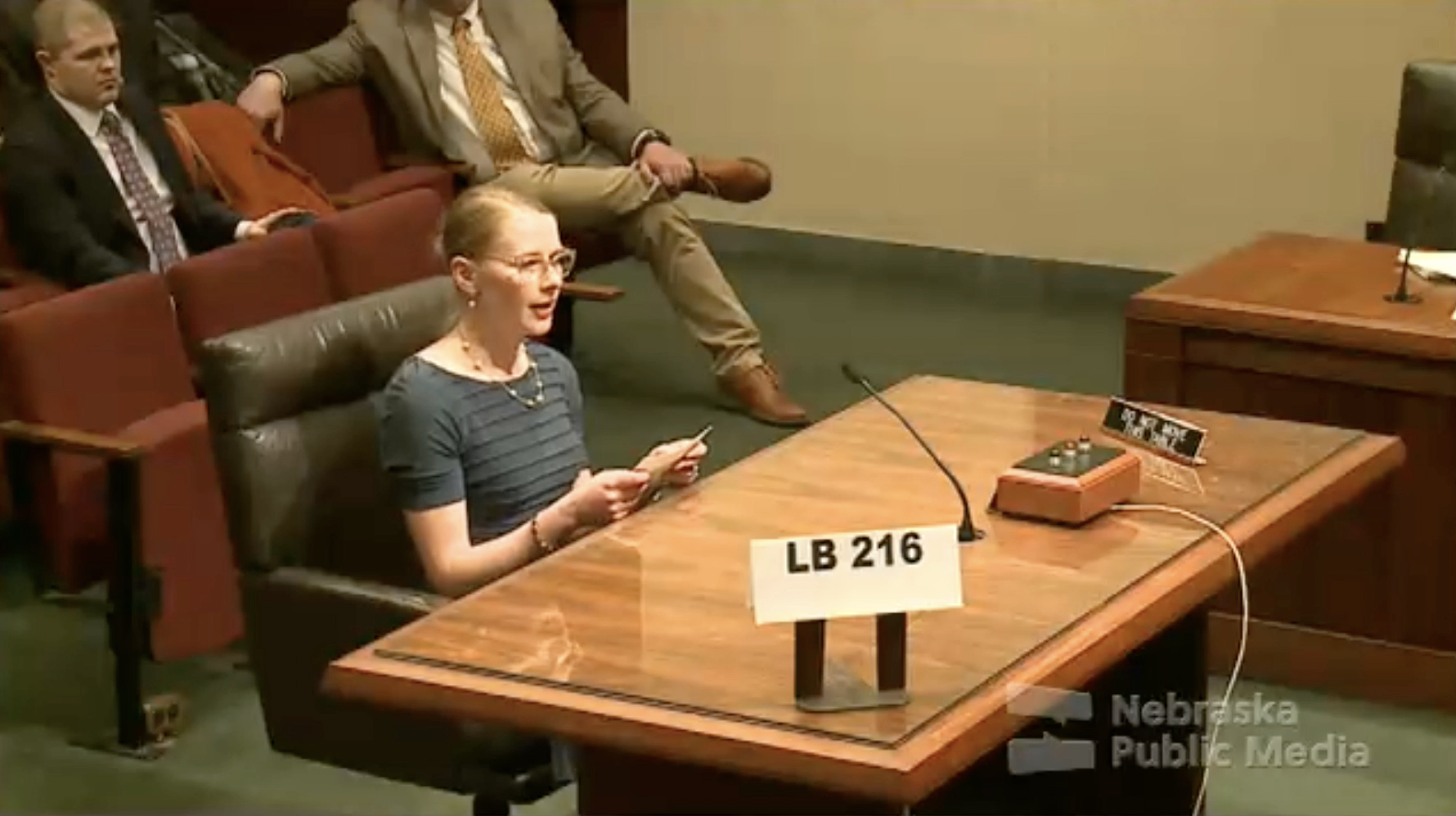 |
| Amy Devries, OD, testified in support of LB 216, citing proof that the bill is not a threat to public safety as opposers argue. |
While concerns about safety and insufficient training are often cited by opposers of the bill, Amy Devries, OD, who practices in Freemont, NE, presented data during her testimony from existing laser states to serve as evidence of the procedure’s safety when performed by an optometrist. She pointed out, “Optometrists are already licensed to perform SLT in 10 states: Colorado, Wyoming, Oklahoma, Arkansas, Louisiana, Mississippi, Indiana, Kentucky, Virginia and Alaska. Despite what you will likely hear from the opposition, there has been no evidence of harm to the public in any of these states. Agencies charged with protecting public safety in those states have officially validated that there has been no increase in regulatory actions taken against optometrists,” said Dr. Devries. Notably, Oklahoma, which currently has the broadest scope of practice for optometrists in the country, has allowed ODs laser privileges for more than two decades with no proof of public safety risk.
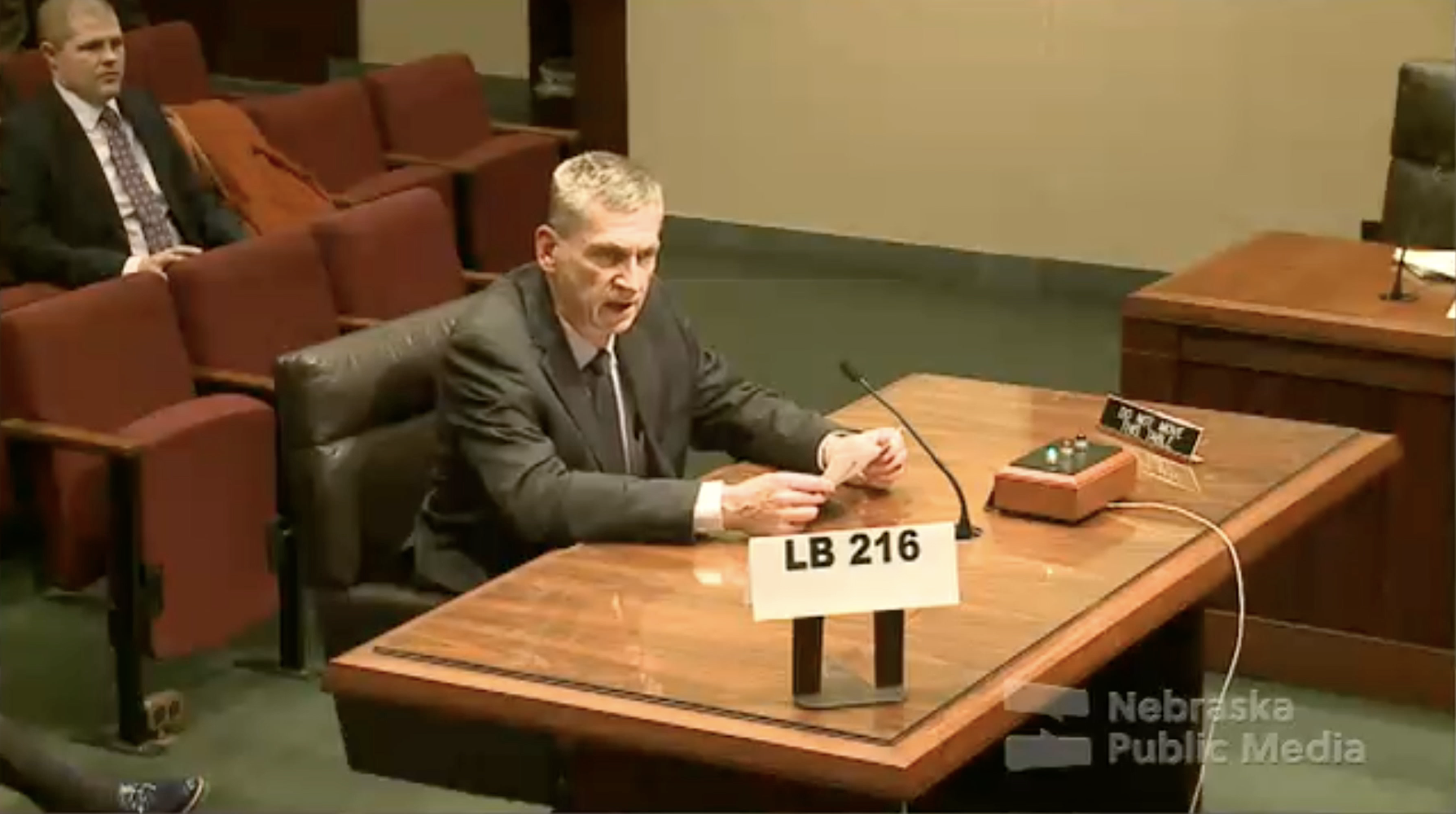 |
| Robert Vandervort, OD, chair of Nebraska’s State Board of Optometry, also used data from other laser states to reassure committee members about the safety of the SLT bill. |
The chair of Nebraska’s State Board of Optometry, Robert Vandervort, OD, who practices in Omaha, NE, also took the stand to challenge the concerns of the opposition regarding the safety of optometrists performing SLT. “Over the last 40 years, ophthalmology has strongly opposed every single enhancement to optometry’s scope of practice, arguing the implementation of that scope is unsafe for the public,” he said. “Yet, we have submitted copies of letters from other state boards of optometry in states that authorize optometrists to perform SLT documenting that there have been no complaints against optometrists relative to their performance of SLT.” Dr. Vandervort then assured the committee, “You do not need to speculate what will happen in Nebraska if LB 216 is passed.”
Andrew Bateman, OD, from Lincoln, NE, pointed out in his testimony that administering SLT requires a skill set that optometrists already use on a daily basis. “The laser is mounted to a slit lamp, and to align the laser, you must understand how to focus a slit lamp, which we have to do every day,” he explained. “The second part of that is utilizing a gonio lens to view the angle of the eye where the laser is applied. We use a gonio lens on glaucoma patients already to examine and monitor the angle of the eye where the drainage occurs.”
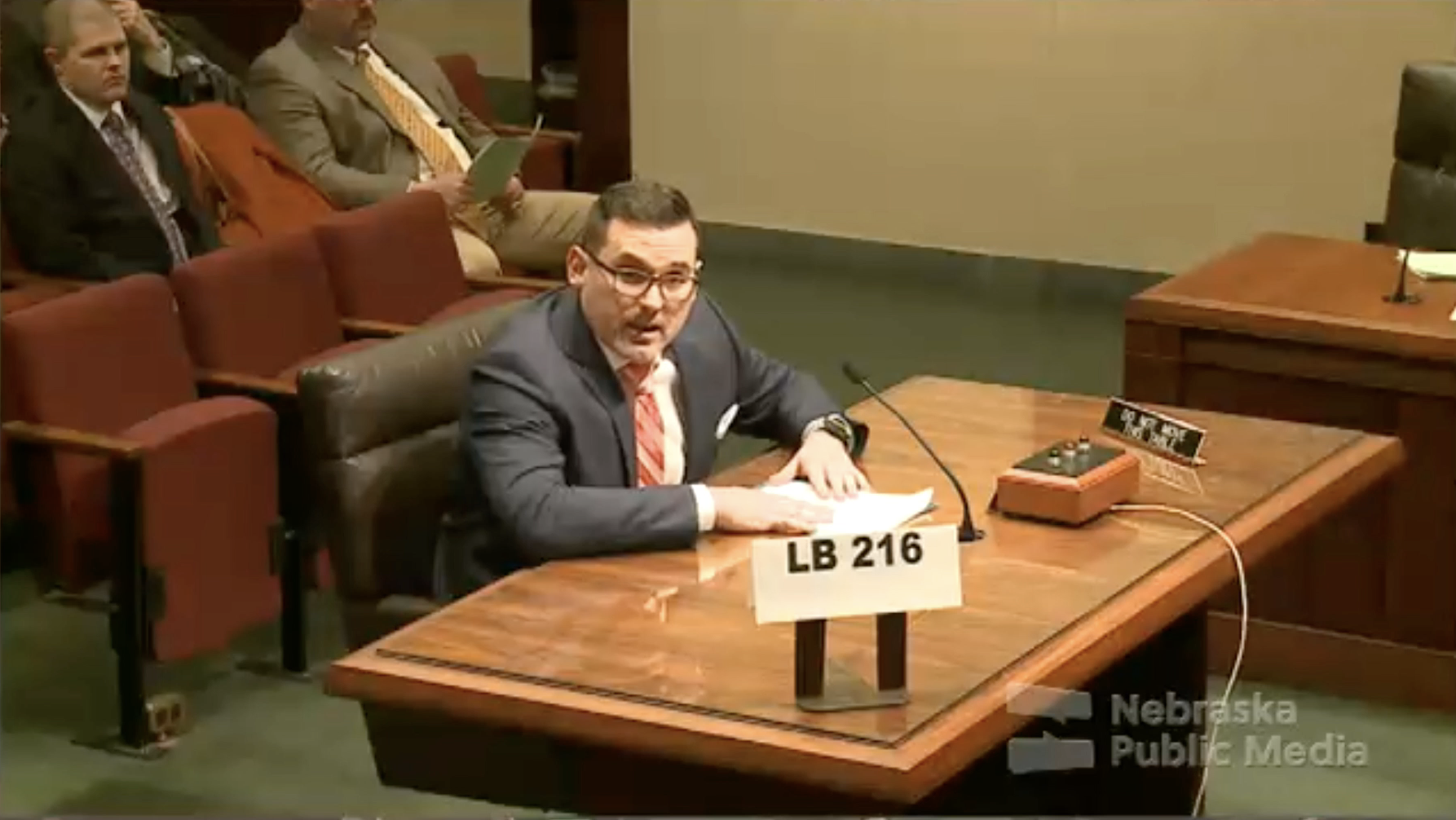 |
| Andrew Bateman, OD, explained to committee members that SLT requires a skill set that ODs already use on a daily basis. |
Dr. Bateman concluded, “Once you can perform these two skills, the last step is the application of the laser to the tissue by using the appropriate setting and pressing a button.”
Christopher Wolfe, OD, who has a private practice in Omaha, NE, but received training on SLT in Oklahoma 15 years ago, expressed to committee members the patient benefit of making the procedure more accessible. “SLT will lower IOP in 80% of patients by about 20%,” he said, adding that topical medication shows similar efficacy but may be disruptive to the ocular surface over time, not to mention the expense or compliance issues that accompany drop therapy. Dr. Wolfe also cited six-year data from the LiGHT trial, which concluded that “there is a lower need for incisional glaucoma surgery or cutting surgery when patients are treated with SLT than with drops.”
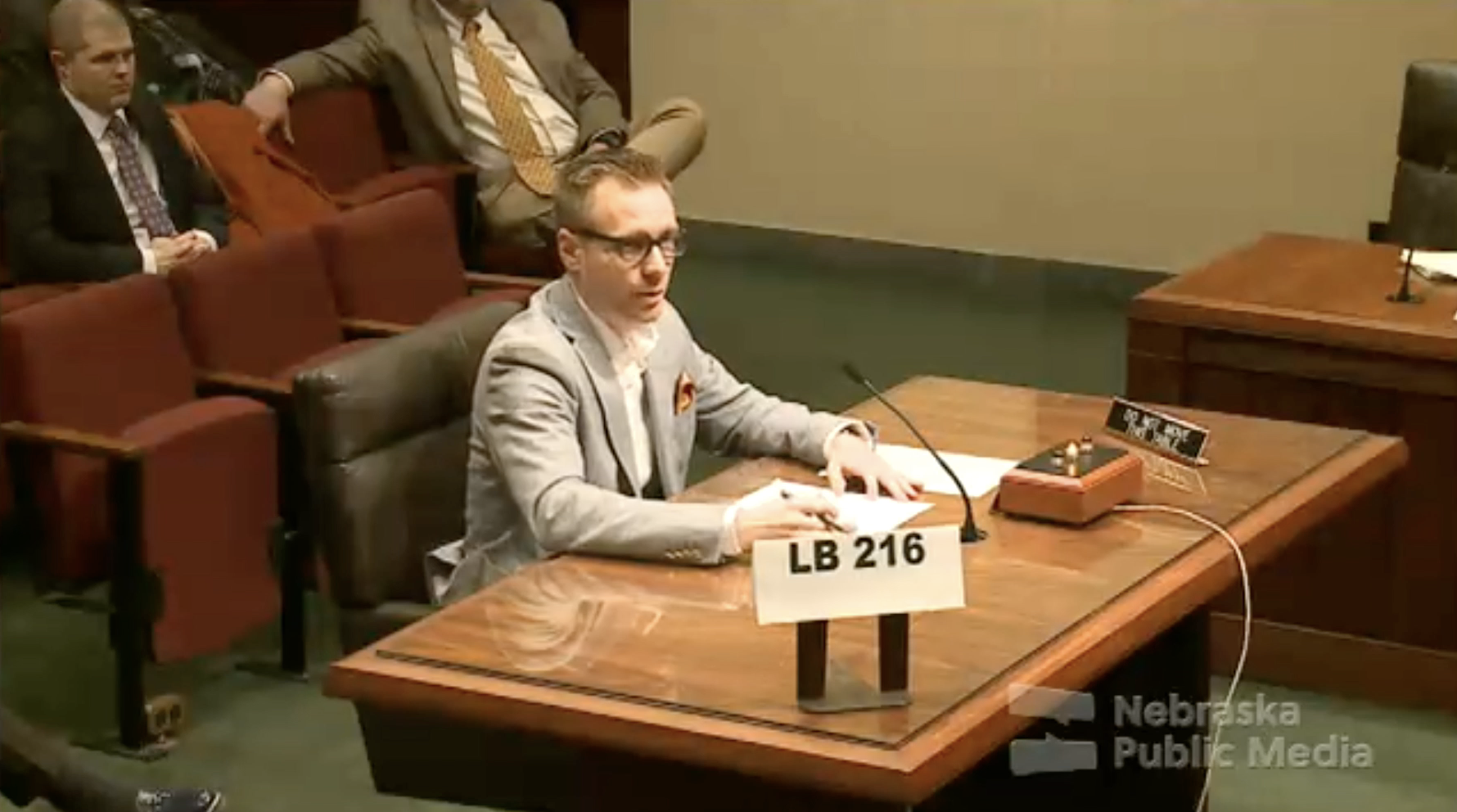 |
| Although Christopher Wolfe, OD, was trained in Oklahoma where ODs are allowed to perform SLT, he now practices in Nebraska and is unable to use that training under the state's current scope of practice. |
The first testimony opposing LB 216 was given by Daniel Rosenquist, MD, a family medicine physician in Columbus, NE, and president of the Nebraska Medical Association. Dr. Rosenquist, along with several subsequent testifiers, cited concerns regarding education and training standards for optometrists vs. ophthalmologists. “The education and training standards in the current optometric proposal are not sufficient to provide assurance of safe and effective use of the surgical services in question,” he argued before the committee. Dr. Vandervort countered these concerns during his earlier testimony, stating that “Under the provisions of this bill, the Nebraska Board of Optometry will act to ensure that the educational institutions are in compliance with the statutory standards and all doctors are certified to meet those standards.” LB 216 states that optometrists who didn’t receive SLT training in school will be required to attend courses and gain proper certification before performing the procedure.
 |
| Daniel Rosenquist, MD, was one of several testifiers in opposition of LB 216. |
After nearly two hours, the hearing adjourned, and what happens next with LB 216 relies partly on the efforts of scope expansion advocates in the state. “Our next step is outreach to the committee members to ask for their support to vote the bill out of committee,” says Ms. Seelhoff.
To track the status of LB 216, visit www.nebraskalegislature.gov/bills/view_bill.php?DocumentID=50267.

